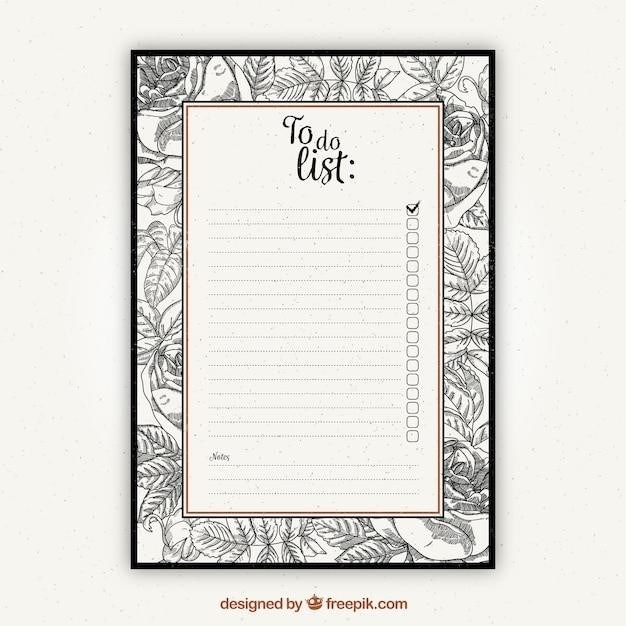Converting Color PDFs to Black and White
Effortlessly transform colorful PDFs into monochrome documents using online tools or specialized software. Choose the method best suited to your needs, considering factors such as file size, print quality, and the complexity of your PDF’s content. Many free online converters offer quick and easy solutions for simple documents.
Online Tools for PDF to Black and White Conversion
Numerous online services simplify the conversion of color PDFs to black and white. These tools often require only uploading your PDF; the conversion happens automatically. Some popular options include dedicated PDF converters offering grayscale or black and white output. These online tools frequently provide additional features, such as file size reduction for efficient printing and the ability to process multiple files simultaneously. Many free online services exist, but paid versions might offer higher file size limits and faster processing speeds. Consider the specific needs of your project when selecting an online tool. Remember to check user reviews to gauge the reliability and ease of use before uploading sensitive documents. Always ensure the online tool you choose prioritizes data security and adheres to privacy policies.
Choosing the Right Tool⁚ Features and Limitations
Selecting the appropriate PDF to black and white conversion tool depends on several factors. Consider the size and complexity of your PDF. Online tools may have limitations on file size, and very large files might require dedicated software. The desired output quality is crucial; some tools offer superior grayscale conversion compared to simple black and white. Examine whether batch processing is needed; many online tools and software programs allow conversion of multiple files at once. Check if the tool offers options for selective conversion, such as converting only images or text to black and white, while leaving other elements unchanged. Free tools often come with limitations on file size and features, while paid versions usually offer more advanced options. Evaluate the user interface and ease of use before committing to any particular tool. Prioritize tools with clear instructions and user-friendly navigation to ensure a seamless conversion process.
Software Options for Converting PDFs to Black and White
Several software applications provide robust features for converting color PDFs to black and white. Adobe Acrobat Pro, a professional-grade PDF editor, offers advanced options for color adjustments and grayscale conversions, ensuring high-quality output. PDFsam Visual is another noteworthy option; it’s known for its ability to selectively convert PDF elements, allowing users to convert only images, text, or lines to black and white while preserving other components. Other dedicated PDF editors often include this functionality as well, providing flexibility in handling various types of PDF documents. For users seeking a cost-effective solution, several free and open-source PDF editors offer basic black and white conversion capabilities. However, these free tools might lack the advanced features found in professional software, potentially limiting their suitability for complex or large documents. The choice ultimately depends on individual needs and budget constraints.

Optimizing PDFs for Black and White Printing
Preparing your PDF for black and white printing involves reducing file size for efficient printing and ensuring optimal print quality. This might include downsampling images and removing unnecessary elements to reduce file size.
Reducing File Size for Efficient Printing
Large PDF files can lead to slow printing speeds and increased ink consumption. Optimizing file size is crucial for efficient black and white printing. Several strategies can significantly reduce file size without compromising visual quality in your monochrome output. One effective technique is to compress images within the PDF. Many image editing programs and online tools allow you to reduce the resolution of images without noticeable loss of detail, especially when converting to grayscale. This significantly shrinks the file size. Another approach involves removing unnecessary elements like high-resolution images or embedded fonts that are not essential for the final black and white print. If the PDF includes vector graphics, consider converting them to raster images at a lower resolution for printing, as this can drastically reduce file size. Finally, explore PDF compression tools specifically designed to reduce file size while preserving text and image quality. These tools often employ algorithms to optimize the PDF structure and reduce redundancy. By combining these techniques, you can achieve substantial reductions in file size, resulting in faster and more efficient printing.
Ensuring Print Quality in Black and White
Achieving high-quality black and white prints from color PDFs requires careful attention to detail. The initial conversion process significantly impacts the final output. While converting to simple black and white might suffice for text-heavy documents, images often benefit from grayscale conversion, offering better tonal representation. This nuanced approach retains more detail compared to a stark black and white conversion, preventing a washed-out look. Printer settings also play a crucial role. Ensure your printer is set to print in grayscale mode, rather than color mode, to avoid wasted ink and potential color artifacts. The printer’s resolution setting should match or slightly exceed the resolution of the images within the PDF for optimal clarity. Experiment with different print settings, such as sharpness and contrast, to fine-tune the output and achieve your desired level of detail and sharpness. Additionally, consider the type of paper used. Higher-quality paper generally produces sharper, more defined prints, especially for images. By carefully managing the conversion process and optimizing your printer settings, you can achieve crisp, high-quality black and white prints from your color PDF files.

Advanced Techniques for Black and White PDF Conversion
Explore selective conversion options to modify specific PDF elements, preserving color in certain areas while converting others to black and white. Batch processing tools enable efficient conversion of multiple files simultaneously, saving considerable time and effort.
Selective Conversion of PDF Elements
For nuanced control over your PDF’s transformation, consider the power of selective conversion. This advanced technique allows you to target specific elements within your document for black and white conversion, leaving others untouched. Imagine a scenario where you have a vibrant logo that you want to maintain in full color, nestled within a predominantly textual document. Selective conversion empowers you to transform the text to black and white while preserving the logo’s original color scheme. This granular level of control is particularly valuable for documents that require a blend of color and monochrome elements. The ability to precisely target what gets converted ensures a visually appealing and functionally sound result. Certain software applications and online tools offer this feature. Explore the options available to determine the best fit for your specific needs and technical capabilities. The result is a sophisticated approach to monochrome PDF creation. This method prevents the loss of crucial color details, ensuring the visual integrity of critical components within the document.
Batch Processing for Multiple PDF Files
Streamline your workflow with batch processing, a time-saving feature for converting numerous PDFs to black and white simultaneously. Instead of individually converting each file, batch processing allows you to select multiple PDF documents and apply the conversion process to all of them at once. This is invaluable when dealing with large volumes of documents, significantly reducing the time and effort required. Imagine needing to prepare a hundred documents for black and white printing – batch processing eliminates the repetitive task of individual file conversions. Many software applications and online services provide this efficient functionality. Look for features that allow you to select multiple files, often by drag-and-drop or folder selection. Check the file size limits imposed by the chosen tool, as some may restrict the total size of files processed in a single batch. Prioritize tools offering progress indicators to monitor the batch conversion status and receive notifications upon completion. This ensures a smooth and efficient workflow, even with extensive document collections. This feature is a cornerstone of efficient digital document management.
